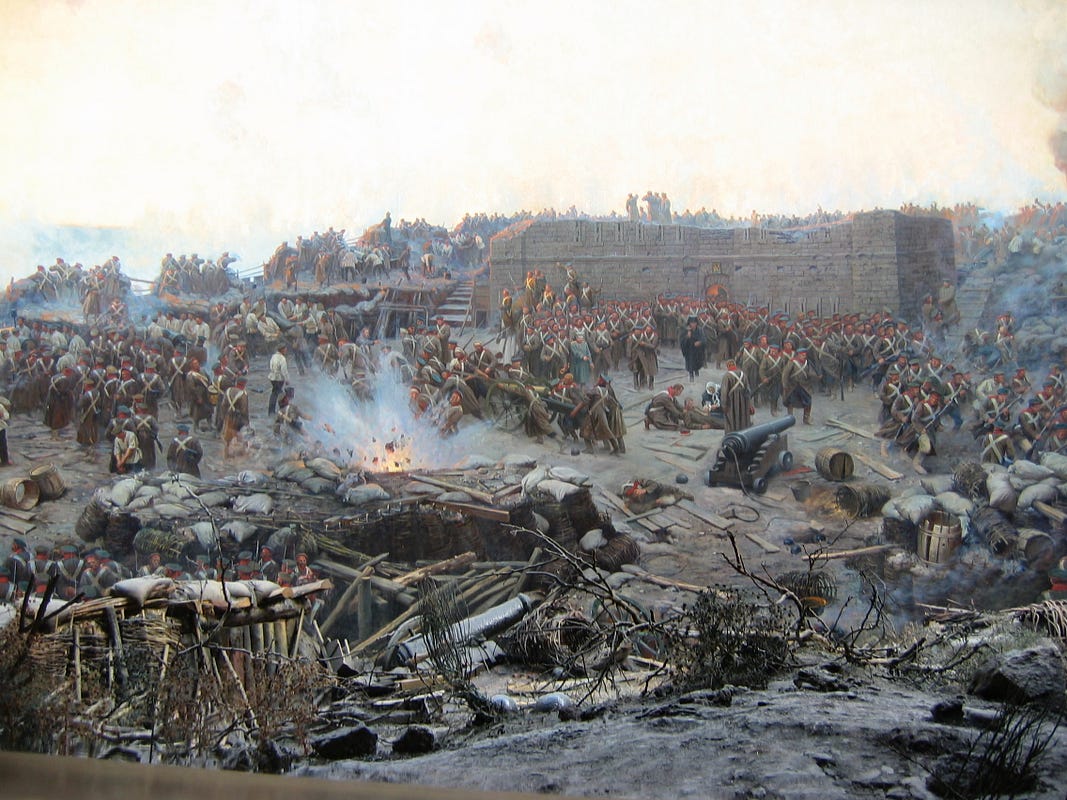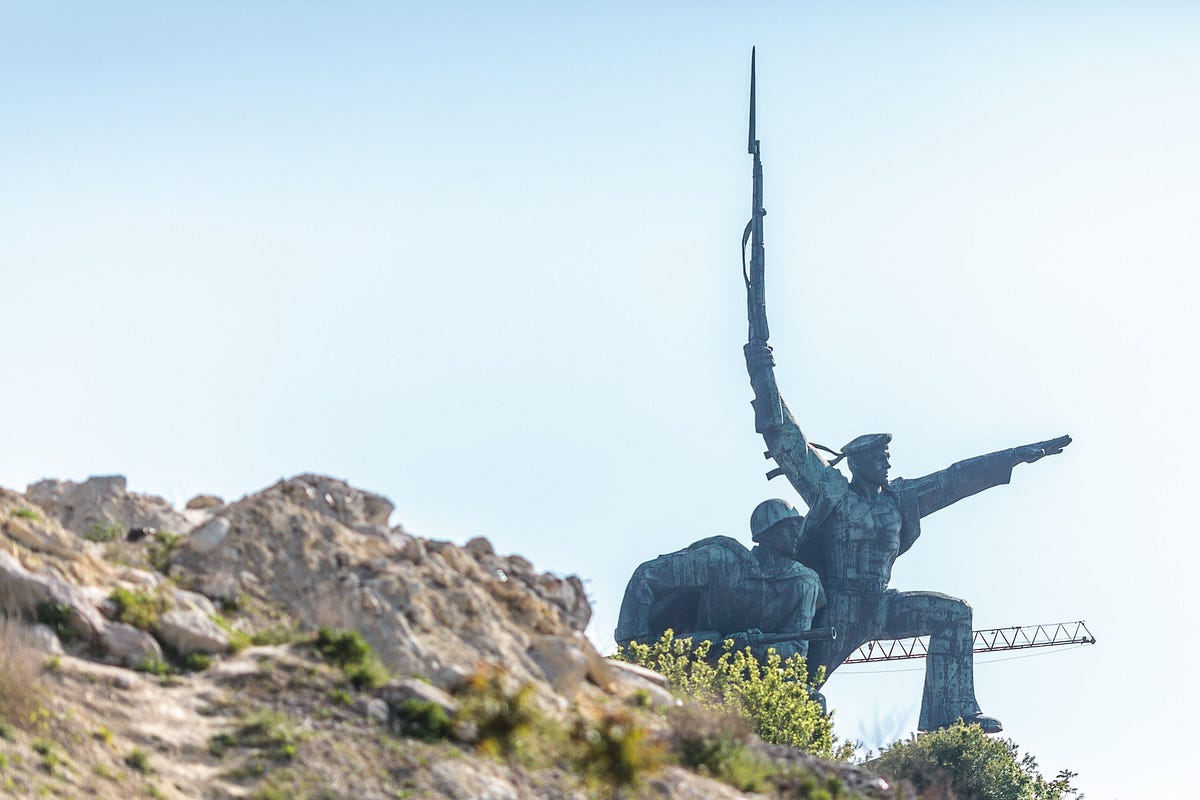Matthew Gault in War is Boring
On March 6, the Crimean parliament voted in favor of joining Russia—the latest unsurprising development in Moscow’s bloodless, slow-motion takeover of Ukraine’s strategic Crimean Peninsula.
Russia’s motivation is a pungent blend of historical obligation andRealpolitik. Moscow wants to embolden ethnic Russians living in southeastern Ukraine and also preserve its access to Crimea’s military bases and ports.
The city of Sevastopol—the region’s gateway to the Black Sea, the Mediterranean and the Indian Ocean—lies at the heart of Russia’s interests on the peninsula.
A full third of Russian sea trade flows through Sevastopol and, to a lesser extent, other Black Sea ports. And the Kremlin’s regional naval force depends on Sevastopol’s facilities.
Russian identity, too, is tied up in Crimea. It’s an open question which factor is most important. And after Ukrainians deposed their pro-Russian president in February, Moscow mobilized to claim what it saw as rightfully its own.https://www.youtube.com/watch?v=g6UXyCIx0Js
Dark waters
In April 2010 the Ukrainian parliament erupted in chaos. MPs opposed to recently elected president Viktor Yanukovych—now recently ousted—brawled with the prez’s supporters.
Eggs splattered on walls. Smoke bombs ignited. Umbrella-wielding aides protected the chamber’s speaker. The session continued and the motion in question passed by a narrow margin, with 236 yeas and 214 nays.
The issue? A 25-year extension of Russia’s lease on a Sevastopol naval base in exchange for cheaper natural gas from Moscow. Sevastopol has the best warm-water ocean access of all former Soviet cities.
Russia’s lease began in 1997, after then-president of Russia Boris Yeltsin renounced Moscow’s claim to Crimea. A treaty granted Russia permission to base its small Black Sea Fleet in Sevastopol in exchange for Moscow forgiving Ukraine’s debt.
The lease was set to expire after 20 years. With the recent extension, the Kremlin will have legal access to Sevastopol until 2042. If Crimea joins Russia, the lease becomes moot. ‘Siege of Sevastopol’ by Franz Roubaud. Via Wikimedia Commons
‘Siege of Sevastopol’ by Franz Roubaud. Via Wikimedia Commons
 ‘Siege of Sevastopol’ by Franz Roubaud. Via Wikimedia Commons
‘Siege of Sevastopol’ by Franz Roubaud. Via Wikimedia Commons
Port in a storm
In the 1700s, the Ottoman Empire was collapsing and the Russian Empire expanding. In 1783, Russia annexed the Crimean Khanate — a vassal state of the Ottoman empire since the mid-15th century.
The move gave the Russians effective control over most of Crimea. In 1784, Catherine the Great ordered a new naval base on the peninsula expanded into a whole city. She named it Sevastopol. It became Russia’s base of operations in the Black Sea.
In October 1853, the Russians and Ottomans went to war. The Crimean conflict lasted three years. The combined forces of the Turks, French and British bested the Russians.
Sevastopol was the main battleground. The allied forces laid siege to the city in October 1854. After 11 hard months that claimed 100,000 Russian lives, Sevastopol fell and the Crimean War ended.
The siege’s cultural impact was enormous. Alfred, Lord Tennyson’s famous poem “The Charge of the Light Brigade” celebrates British troops’ suicidal attack during the battle. The Times of London coined the term “the thin red line” during the war.
Leo Tolstoy served during the siege and later based War and Peace on his impressions. Russia’s first-ever feature film was Defense of Sevastopol.
Russia rebuilt the city. During World War II, Axis powers bombed Sevastopol and attempted, repeatedly, to capture the city. Sevastopol held for 250 days before the Axis took control. The Red Army liberated the city in 1944. Moscow dubbed Sevastopol a Hero City—one of only 14 such cities. A Russian military monument in Sevastopol. Via Wikimedia Commons
A Russian military monument in Sevastopol. Via Wikimedia Commons
 A Russian military monument in Sevastopol. Via Wikimedia Commons
A Russian military monument in Sevastopol. Via Wikimedia Commons
Regifting
In 1954, Nikita Khrushchev gave Crimea to Ukraine, then a Soviet member state. It was a symbolic gesture meant to cement Russian-Ukrainian friendship. The Soviet Union collapsed in 1991, leaving Crimea as part of Ukraine.
It’s not surprising that the Crimean parliament voted to join the Russia. The peninsula has long been more culturally Russian than Ukrainian. Russian soldiers fought and died there over several centuries.
Besides the naval base in Sevastopol, Russia has seven other military installations in Crimea—Kacha airfield north of Sevastopol, Gvardeiskoe airfield in central Crimea, the Feodosiia naval test center and Cape Opuk firing range plus communications centers in Otradnoe, Priberezhnoe and Yalta.
For years, Russia has tried to reinforce its Black Sea Fleet and reassert its regional claims. To that end, the Kremlin is building a new naval base on Russian soil near Sochi. But that doesn’t mean Moscow is willing to to give up infrastructure it built and maintained over 200 years … at the cost of hundreds of thousands of dead Russians.
No comments:
Post a Comment